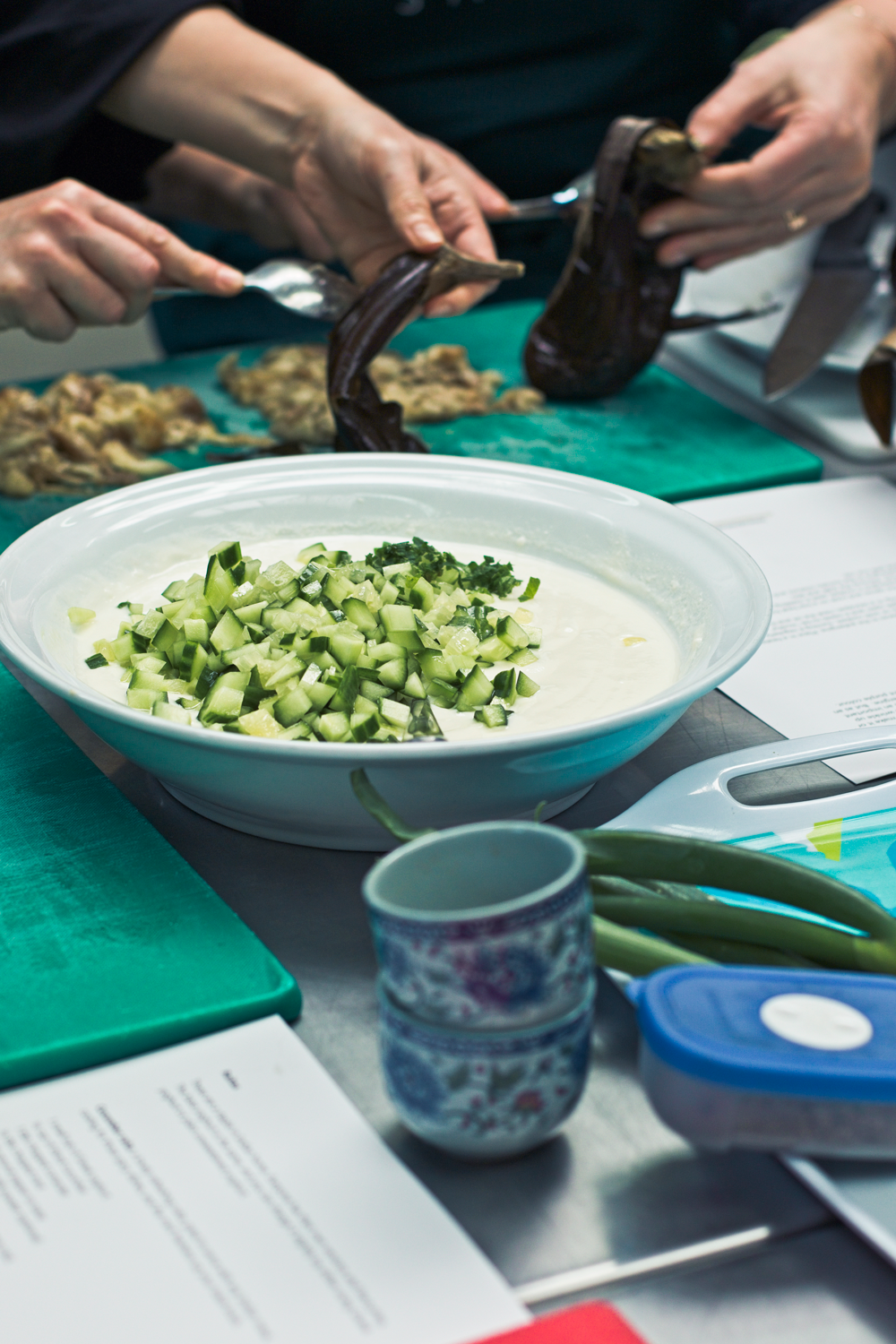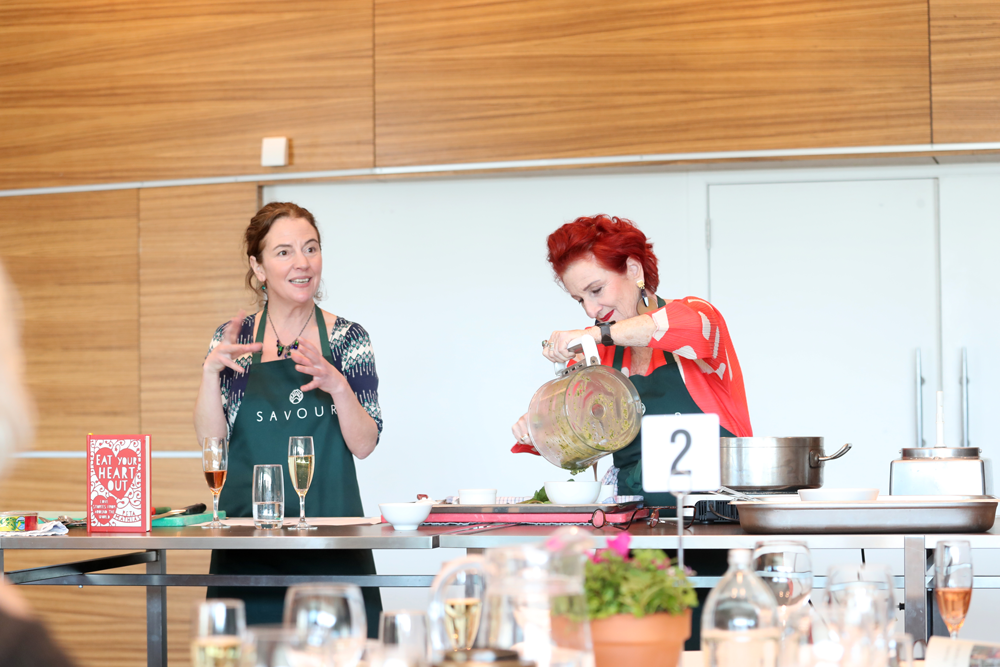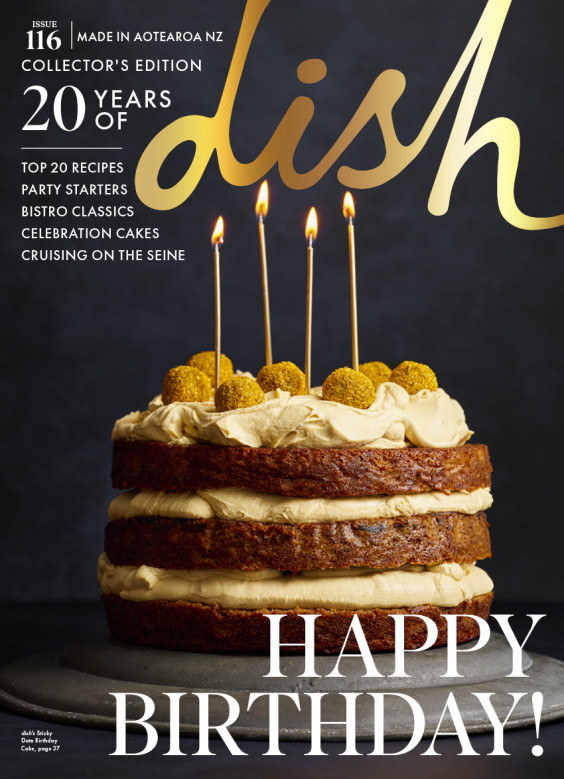How Savour Cooking School Head-Chef Wendy Joyce Pulls Off Teaching Food with a Side of Art History

Wendy Joyce is a chef and former uni lecturer who also happens to have a PhD in 19th-century French Studies. We talked to her about her cooking school, Savour, and how it came to be.
What made you switch from working in restaurants to teaching cooking?
I actually started out as a university professor, teaching French and art history! When I immigrated to New Zealand 10 years ago for my then-husband’s job, there were no full-time roles in my field so I went back to study another lifelong passion: cooking.
As a side note, I moved to France from the US in my teens and ended up doing a PhD in French and marrying a Frenchman. The memories that stick from that time are sitting around a table sharing food with French family and friends, visiting markets on the Brittany coast where we spent weekends, or down in Provence, where I later lived.
I worked in restaurants while training as a chef in Wellington, but it was never my goal to do that fulltime. The hours are long, it’s physically exhausting, and isn’t usually conducive to having a family. Then suddenly, after 17 years of marriage and into my second year of a new life in New Zealand - with a first house and mortgage - I found myself a single mum of two primary schoolers. I had to find a way to make an income that would pay the bills and allow me to be there for my kids in the afternoons and evenings.
Managing a cooking school was ideal; a lot of work is behind the scenes so I could fit it around my kids’ school hours, and do it from home. Now they are teenagers and my older son helps with dishes and kitchen prep; I'm hopeful his sister will join us soon!
And I’ve always loved teaching so it was a natural choice for me.
How is cooking in a restaurant different to cooking in a class?
When you work as a chef in a restaurant, you’re focused on creating beautiful food for people you usually won’t even meet. You don’t get a chance to explain to customers how you made their dish, what techniques were involved, how long the prep took and so forth.
In a class, it’s all about connecting with people and revealing the secrets behind creating a great dish, talking about the ingredients, showing how to recreate the dish at home. It’s more of a dynamic conversation.

Peeling eggplant and making raita in class. Photo credit: Campbell Downie.
You’ve often used art history as an inspiration for your dishes. How do you integrate it in your classes?
I teach a series called Cooking with the Impressionists. Each class starts with a brief presentation with images where I talk about a French Impressionist painter, and then we cook dishes inspired by the artist’s recipe collection. This year I’ve added Picasso so I’m expanding the time period to cover later artists from other countries.
I also encourage everyone to get creative in how they make and plate their dishes. I’m always surprised by how much variety we get when everyone is given the same colourful ingredients and are asked to make Cézanne's Provencal vegetable tart, for example. It’s lots of fun!
What do you love about teaching? I’m in my element when connecting with passionate foodies who are curious to learn more. I love the warm, friendly vibe in a class where groups of people who don’t necessarily know each other create a meal together, get their hands involved in making dough, chopping vegetables, frying over the stove together, chatting with the chef, sharing tips of where to buy certain ingredients (last weekend it was white poppy seeds, for example, or the best saffron or mastic).
At the end of every class we sit and share the meal we prepared. It’s a nice time to continue the conversations, laugh, connect and have a few drinks.
Which classes are the most popular?
At the moment it’s Ottolenghi-style cooking by far. It’s a vegetarian feast-style class in which we make about 12 dishes inspired by Middle Eastern and Persian cuisines and my own childhood memories of incredible feasts with my Persian neighbours back in the US.
We also run classes with guest chefs from Wellington restaurants: Italian cooking with our lovely Ligurian chef Nicla Gallione, Malaysian with chef Muthuvelu Supramaniam, and a popular knife skills class with MacLean Fraser, the executive chef at Artisan.
We also host special classes with chefs from out of town: recently we had Peta Mathias at Te Papa.

Wendy and Peta Mathias teaching a class together. Photo credit: Lucy Mutch.
What makes Savour stand out from other cooking schools?
We have small groups, and it’s hands-on rather than demos. The attention is personalised; for example, at the knife skills class Chef MacLean helps each person to sharpen their knife with a stone before we start cooking. One recent client described our classes as ‘bespoke’ because we can tailor them for private groups and bring in the best chef for the job.
We run classes in a variety of venues (pop-up) around town as well as at our main locations in Brooklyn and Lyall Bay; so we’re more mobile than your average cooking school.
We also grow most of our vegetables in our local organic kitchen garden, picked right before the classes. What’s in season dictates our menus as much as possible. We compost all the waste in worm farms then return the fertiliser to the soil to feed new plants. So there’s a sustainable cycle. I’d love to eventually have a venue where the class kitchens are right next to the gardens so people can gather the ingredients themselves. I’m saving up for that!
We also make everything we can from scratch, from base ingredients like stocks and broths to pasta noodles, sourdough and other breads and fermented drinks. I’m big into fermenting and usually serve my homemade kombucha or water kefir in the classes.I also like to bring special treats I make beforehand as a little bonus to the main menu: right now, it’s seeded za’atar crackers and hummus in the Middle Eastern class and usually a yummy dessert.
Who comes to the classes?
They’re mostly between 25 and 75 - people with busy lives who enjoy cooking, trying new restaurants and learning more about food—the sort of person who would plan a holiday around where they’ll eat. But we also welcome the curious novice who wants to learn techniques to make life in the kitchen more joyful. Or people who don’t particularly enjoy cooking but who are interested in culinary and art history (I’ve had clients who never cook attend my artists’ series and they really enjoyed it!)

A knife skills class with Chef MacLean Fraser.
What is Savour’s mission?
Our name ‘says it all really. It’s so easy mindlessly devour takeaways while watching Netflix (which I’m totally guilty of!). But when we pause to appreciate how things taste, where the ingredients come from and how our food makes us feel, there’s a sense of connection that’s at the heart of wellbeing. It doesn’t have to take heaps of time; we teach practical short cuts, methods to prep flavour-boosting ingredients ahead of time so you can, say, pop a homemade stock cube or curry paste out of the freezer and into some sizzling vegetables to make a fast, savour-worthy meal.
Savour
savour.org.nz
latest issue:
Issue #116
Issue 116 of dish is a special 20th birthday collector’s edition! This gorgeous issue brings the party to you, featuring delectable birthday cakes with recipes supplied by guest chefs – from Al Brown’s simply delicious Chocolate Fondant Cake to Ben Bayly’s Opera Celebration Cake. From cakes to sensational drinks and nibbles, to a French bistro feast and Sarah and Claire’s top 20 winter recipes, the magazine is jam-packed with dishes to make at home. 20 years strong and ready to party – issue 116 is on sale NOW!

